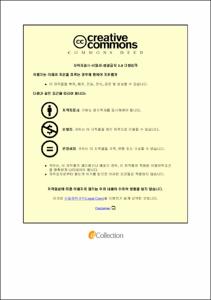섬기린초(Sedum takesimense)의 기능성 물질 규명과 특성 분석 및 바이오 소재로의 활용
- Abstract
- The purpose of this study was to isolate and identify useful compounds from Sedum takesimense, as well as to evaluate the possibility of employing the compounds as biomaterials. Three of single-compound identified and purified from S. takesimense in this research. The isolated three compounds were named 4,6-di-O-galloylarbutin (OGA), 2,4,6-tri-O-galloyl-glucose (OGG), and 1,2,4,6-tetra-O-galloyl-glucose (TOGG). Three compounds were examined for their anti-bacterial, anti-MRSA, anti-inflammatory, and anti-acne properties for bio-material use in this study. Furthermore, during 30 storage days, a comparison examination was performed with S. takesimense extracts and existing preservatives. We selected three types of foods for our evaluation: soy sauce, corn silk tea, and salad dressing. As a result, these three compounds have demonstrated anti-bacterial activity, with TOGG demonstrating particularly potent anti-bacterial activity. TOGG also shows anti-bacterial efficacy against multidrug-resistant pathogenic bacteria, such as MRSA and clinical isolates. With an FIC value of 0.281, the combination of TOGG and β-lactam antibiotic (e.g., oxacillin) indicated synergistic efficacy against MRSA. This finding suggested a novel strategy for fighting pathogenesis induced by multidrug-resistant bacteria utilizing plant materials. Furthermore, combining the active compound isolated from the plant with antibiotics has proven to be a viable way of eliminating pathogens synergistically. The ethanolic extract and isolated three components (OGA, OGG, and TOGG) significantly suppressed the production of NO and pro-inflammatory cytokines (TNF-, IL-1, and IL-8) in the anti-inflammation test. Furthermore, OGG and TOGG had MIC values for Cutibacterium acnes of 12.5 μg/mL and 3.2 μg/mL, respectively. These findings showed that S. takesimense extract and its isolated components had anti-inflammatory properties against LPS-induced inflammation, as well as anti-bacterial activity against C. acnes. To assess the potential of S. takesimense extracts as food preservatives, three different foods chosen: soy sauce, corn-silk tea, and salad dressing. For this evaluation, it chose various food-borne pathogens (bacteria) isolated from each food sample. Four commercially available food preservatives employed, and each was applied to a food sample appropriate for the intended usage. Consequently, a higher concentration of S. takesimense extract utilized than conventional food preservatives. However, this extract suppressed microbial growth in soy sauce, corn-silk tea, and salad dressing to increase shelf life. Furthermore, it observed that the sensory assessment of each food item containing the extract did not affect overall palatability, and it demonstrated excellent sensory evaluation findings when compared to other commercial food preservatives. The three of single-compound isolated and purified from S. takesimense extract examined for their potential application as biomaterials in this study. TOGG is one of them and it has excellent anti-bacterial activity, and a synergistic impact with the β-lactam antibiotics used to combat MRSA. It demonstrated the possibilities of an alternative to antibiotics. Furthermore, three of single-compound exhibit good anti-inflammatory and anti-acne properties; hence, it can be use for functional cosmetic products. Finally, when S. takesimense extracts compared to commercially available food preservatives, the effects fully demonstrated without compromising sensual elements, revealing its potential as an excellent bio-industrial material.
- Issued Date
- 2022
- Awarded Date
- 2022. 2
- Type
- Dissertation
- Publisher
- 부경대학교
- Affiliation
- 부경대학교 대학원
- Department
- 대학원 식품공학과
- Advisor
- 김영목
- Table Of Contents
- 제1장 천연물 유래 바이오 산업 소재 동향 1
I.천연물 유래 소재의 용도 및 활용 2
1.천연물 유래 식품첨가물 2
2.천연물 유래 건강기능식품 10
3.천연물 유래 화장품 20
II.국내 및 해외 천연물 시장 동향 26
1.국내 천연물 소재 시장 동향 26
2.국외 천연물 소재 시장 동향 28
III.천연물 유래 소재의 한계점 및 미래 32
IV.참고문헌 35
제2장 섬기린초 추출물 유래 화합물의 분리 동정 및 항균 특성 39
I.서론 40
1.연구배경 40
2.섬기린초(Sedum takesimense)의 특성 43
3.주요 항생제내성세균 methicillin resistance Staphylococcus aureus (MRSA) 47
II.재료 및 방법 53
1.섬기린초 추출물 제조 53
2.섬기린초 추출물에서 화합물의 분리 및 동정 53
3.사용균주 및 항생제 56
4.추출물 및 정제화합물의 항균활성 및 최소저해농도 측정 57
5.MRSA에 대한 분리 화합물과 항생제의 상승 효과 58
III.결과 및 고찰 60
1.섬기린초에서 분리한 화합물의 정제 및 구조결정 60
2.섬기린초 추출물 및 유래 화합물의 항균활성 스크리닝 67
3.섬기린초 추출물 및 유래 화합물의 anti-MRSA 특성 72
4.MRSA 표준균주 및 임상분리주에 대한 베타 락탐계 항생제의 최소 저해 농도 76
5.섬기린초 유래 추출물과 베타락탐계 항생제의 상승효과 80
IV.결론 84
V.참고문헌 86
제3장 섬기린초 추출물의 항염증 및 미백 활성 92
I.서론 93
1.여드름과 염증의 상관성 93
2.피부 미백 연구 동향 104
II.재료 및 방법 106
1.섬기린초 추출물 및 분리 화합물 106
2.RAW 264.7 cell의 세포생존율 측정 106
3.Nitric oxide (NO) 생성 억제 활성 평가 107
4.염증성 사이토카인(TNF-α, IL-1β 및 IL-8) 생성 억제 효과 108
5.여드름 유발균 Cutibacterium acnes에 대한 항균 활성 108
6.Tyrosinase 억제 활성 측정 109
7.통계분석 110
III.결과 및 고찰 111
1.섬기린초 추출물의 세포독성 평가 결과 111
2.섬기린초 추출물 및 그 유래 화합물의 NO (nitric oxide) 저해 활성 113
3.염증성 사이토카인(TNF-α, IL-1β 및 IL-8) 생성 억제 효과 116
4.섬기린초 유래 화합물 3종의 여드름 원인균(Cutibacterium acnes)에 대한 항균 효과 121
5.섬기린초 유래 화합물 3종의 tyrosinase 억제 활성 124
IV.결론 127
V.참고문헌 128
제4장 섬기린초 추출물의 식품첨가물 활용 평가 137
I.서론 138
II.재료 및 방법 144
1.섬기린초 추출물 144
2.식품재료 144
3.미생물 선정 및 배양 145
4.기존의 식품 보존제와 섬기린초 추출물의 최소 저해 농도 147
5.경시변화 측정 149
6.관능검사 150
7.통계분석 151
III.결과 및 고찰 152
1.섬기린초 추출물, 식품보존료의 미생물 최소 억제 농도 152
2.간장의 산막효모 제어 효과 155
3.옥수수수염차 중 오염된 Bacillus cereus의 경시변화 160
4.샐러드 드레싱(salad dressing)의 유산균 제어효과 163
5.관능검사 165
IV. 결론 170
V. 참고문헌 171
- Degree
- Doctor
- Files in This Item:
-
-
Download
 섬기린초(Sedum takesimense)의 기능성 물질 규명과 특성 분석 및 바이오 소재로의 활용.pdf
기타 데이터 / 3.27 MB / Adobe PDF
섬기린초(Sedum takesimense)의 기능성 물질 규명과 특성 분석 및 바이오 소재로의 활용.pdf
기타 데이터 / 3.27 MB / Adobe PDF
-
Items in Repository are protected by copyright, with all rights reserved, unless otherwise indicated.